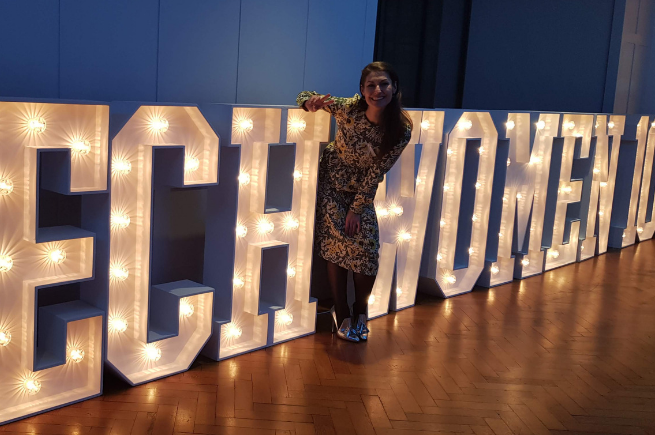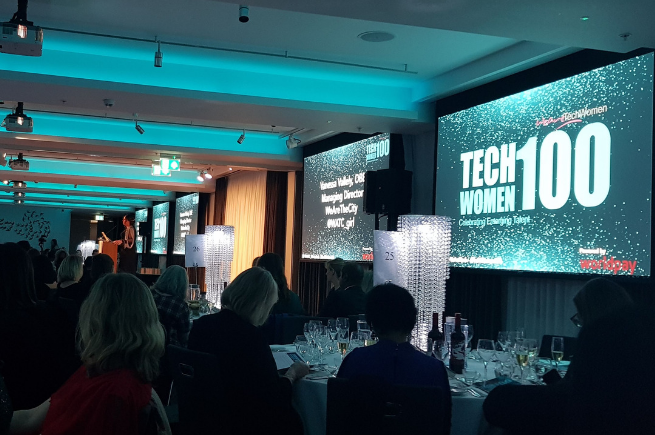Elena Corchero on becoming a TechWomen100 winner
Last year I was awarded a place in the TechWomen100 lineup.
The list celebrates the achievements of 100 women working in tech across the UK and brings the country’s brightest and most innovative female minds together to help connect and move the tech industry forward.
During the evening of the awards presentation, I had the opportunity to speak with a handful of fellow winners about their work, future plans, and opinions on where the tech industry in the UK is headed. It was great to catch up with other tech enthusiasts and find out what they’ve been working on.
Aerial robotics
The evening began with reception drinks and I caught up with Dr Pippa Malmgren who is the Co-founder for H Robotics. It was interesting chatting with her about what she does and about the generalisations we so often make in the tech industry. She told me she worked in aerial robotics, but everyone calls them drones, however, to her, drones are toys, not tools. So often in tech, we adopt words and attach broader meanings to them and this really needs to stop. A prime example of this is when people use the term AI when they are actually talking about Machine Learning. It’s why there’s so much confusion in this industry because we’re not all starting from the same point.

DLT and blockchain
After catching up with Pippa, I spoke to Disa Lee Choun who is the Head of GCSO Innovation at UCB. She’s currently looking at how DLT (Distributed Ledger Technologies) could safeguard biopharmaceuticals. I found this really cool as we always hear people talking about blockchain for cryptocurrencies, but this is just one use of it. Equally, blockchain is just one type of DLT. For those of you unfamiliar with DLT, it’s a consensus of replicated, shared, and synchronized digital data geographically spread across multiple sites, countries, or institutions, and blockchain is just one of the many forms that it can take. Disa is particularly interested in applications that work with counterfeit pharmaceuticals, as and I quote ‘it’s not just the money that’s at stake, but people’s health, and ultimately their lives.’
Previously, I’ve heard DLT being experimented with in the fashion industry as it could be used as a great way to implement a new tagging system. The use of blockchain for provenance and tracking products and food through a supply chain has also become a big talking point. Many people believe it could be used to identify fake products, and even videos and news stories as you’d be able to track them right back to the original source. Could this be the answer to tackling fake news?

Autonomous vehicles
I also had a really interesting conversation at the TechWomen100 awards with Kathryn Lowen who works for TFL. I was curious to speak to her about how TFL see autonomous vehicles, and how they are going to use the data they are collecting from Underground users to improve the travel experience in the capital. She said that the data from the underground WiFi network shows if someone is lost or taking a route that doesn’t make sense. They envision this activating messages via mobile devices, alerting users that they are travelling on an inefficient route.
She also said that TFL’s anonymised data has always been open, so any researcher or designer can access the company’s data. Autonomous vehicles, which I would have initially imagined as a threat to the public transport industry, are actually being looked at by TFL as part of the Mayor’s directives to bring down air pollution and congestion. Right now controls are managed by congestion charges, which is diminishing in effect. So they need to quickly find an alternative, and autonomous shared electric vehicles could be one of the answers to this.
All in all, TechWomen100 put on an amazing evening. For me, it was really special to meet other female heroes, role models and innovators with whom I share a mutual hunger for knowledge and curiosity with to understand and break down the boundaries of each other’s industries.
